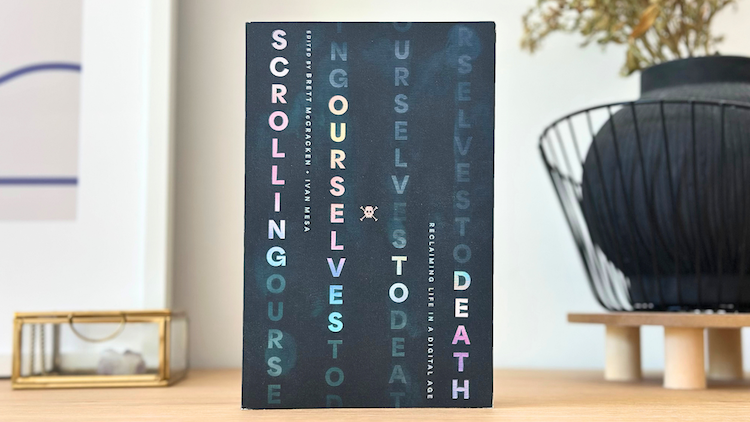Scrolling Ourselves to Death, edited by Brett McCracken and Ivan Mesa, is a timely and thought-provoking exploration of life in the digital age. It features contributions from the teams at Crossway and TGC, including Collin Hansen, Joe Carter, G. Shane Morris, and more.
The book furthers the conversation from Neil Postman’s classic Amusing Ourselves to Death (1985). Postman critiqued television’s impact on public discourse, and this book shifts the focus to smartphones and the unique challenges they present to the church and Christian living.
Postman, Then and Now
The first section revisits Postman’s insights and applies them to our current technological context. I was especially drawn to Joe Carter’s chapter, “From the Clock to the Smartphone”, where he presents a fascinating history of belief-shaping technologies. Carter explains how television once served as a tool for shaping “common knowledge” through public discourse.
Now, smartphones demand that the church engage creatively and courageously in the digital spaces where people increasingly live their lives. Rather than abandoning technology, Carter challenges us to bring it under Christ’s lordship. His call to redeem digital tools through boldness and imagination in online ministry was particularly compelling.
Challenges for Christian Communicators
The second section addresses the practical realities facing Christian communicators today. As a preacher, I found Collin Hansen’s chapter, “How the Medium Shapes the Message for Preachers”, especially encouraging. He contrasts the printing press, which supported deep, reflective religious thought, with the shallower communication style of television.
Hansen urges preachers to resist the pull toward superficial reach and instead pursue depth. His advice to invest in those who are immediately in front of you and to prioritize depth over breadth resonated deeply with me. I was inspired to make my sermons as personal as possible, and irreplaceable to my listeners because of our shared lives together. I want to be a preacher who knows his people, and use this to make my sermons more memorable and meaningful.
How the Church Can Be Life
The final section explores how the church can faithfully exist in a world saturated with endless scrolling. As a Christian creator, I found G. Shane Morris’s chapter on the creative and cautious use of new media to be a standout. Using online video as a case study, Morris builds on Postman’s warnings about entertainment, arguing that smartphones have shifted us from being merely entertained to constantly distracted.
He offers four strategies to counter this trend: 1) Recognize what’s happening to you, 2) Ask meaningful questions, 3) Redeem the medium, and 4) View screens as symbols that point us back to real-life gifts. There is immense potential for digital tools to teach, inspire, and reconnect people with reality. We must use them wisely and intentionally.
The Spiritual Side of Our Screen Time
Scrolling Ourselves to Death is an eye-opening book to the digital age we live in and the spiritual side of our screen time. This book offers both help and hope. If you pay attention to its warnings and apply its wisdom, it can be life-changing.
I received a media copy of Scrolling Ourselves to Death and this is my honest review.

